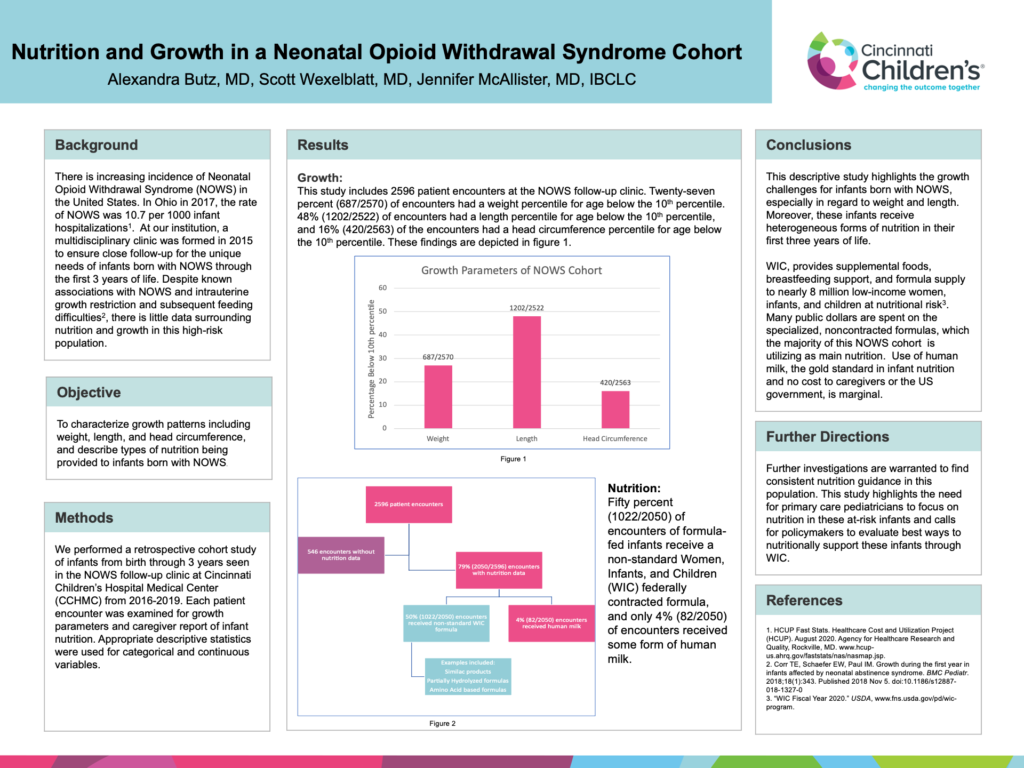Nutrition and Growth in a Neonatal Opioid Withdrawal Syndrome Cohort
Alexandra Butz, MD; Scott Wexelblatt, MD; Jennifer McAllister, MD, IBCLC

Our study of a neonatal opioid withdrawal syndrome cohort highlights growth challenges regarding weight and length with heterogeneous formulas, rather than human milk, being used for nutrition. This data compels primary care pediatricians to focus on nutrition in these at-risk infants and calls for policymakers to evaluate best ways to nutritionally support these infants through WIC.
-Allie Butz, MD
Abstract
Background: There is increasing incidence of Neonatal Opioid Withdrawal Syndrome (NOWS) in the United States. In Ohio in 2017, the rate of NOWS was 10.7 per 1000 infant hospitalizations. At our institution, a multidisciplinary clinic was formed in 2015 to ensure close follow-up for the unique needs of infants born with NOWS through the first 3 years of life. Despite known associations with NOWS and intrauterine growth restriction and subsequent feeding difficulties, there is little data surrounding nutrition and growth in this high-risk population.
Objective: To characterize growth patterns including weight, length, and head circumference, and describe types of nutrition being provided to infants born with NOWS.
Methods: We performed a retrospective cohort study of infants from birth through 3 years seen in the NOWS follow-up clinic at Cincinnati Children’s Hospital Medical Center (CCHMC) from 2016-2019. Appropriate descriptive statistics were used for categorical and continuous variables.
Results: This study includes 2596 patient encounters at the NOWS follow-up clinic. Twenty-seven percent (687/2570) of encounters had a weight percentile for age below the 10th percentile. 48% (1202/2522) of encounters had a length percentile for age below the 10th percentile, and 16% (420/2563) of the encounters had a head circumference percentile for age below the 10th percentile. Fifty percent (1022/2050) of encounters of formula-fed infants receive a non-standard Women, Infants, and Children (WIC) federally contracted formula, and only 4% (82/2050) of encounters received some form of human milk.
Conclusions: This descriptive study highlights the growth challenges for infants born with NOWS especially in regard to weight and length. Moreover, these infants receive heterogeneous forms of nutrition. Many public dollars are spent on the specialized formulas as the majority of this population is insured by Medicaid and utilize WIC. Use of human milk, the gold standard in infant nutrition, is marginal. Further investigations are warranted to find consistent nutrition guidance in this population. This study highlights the need for primary care pediatricians to focus on nutrition in these at-risk infants and calls for policymakers to evaluate best ways to nutritionally support these infants through WIC.